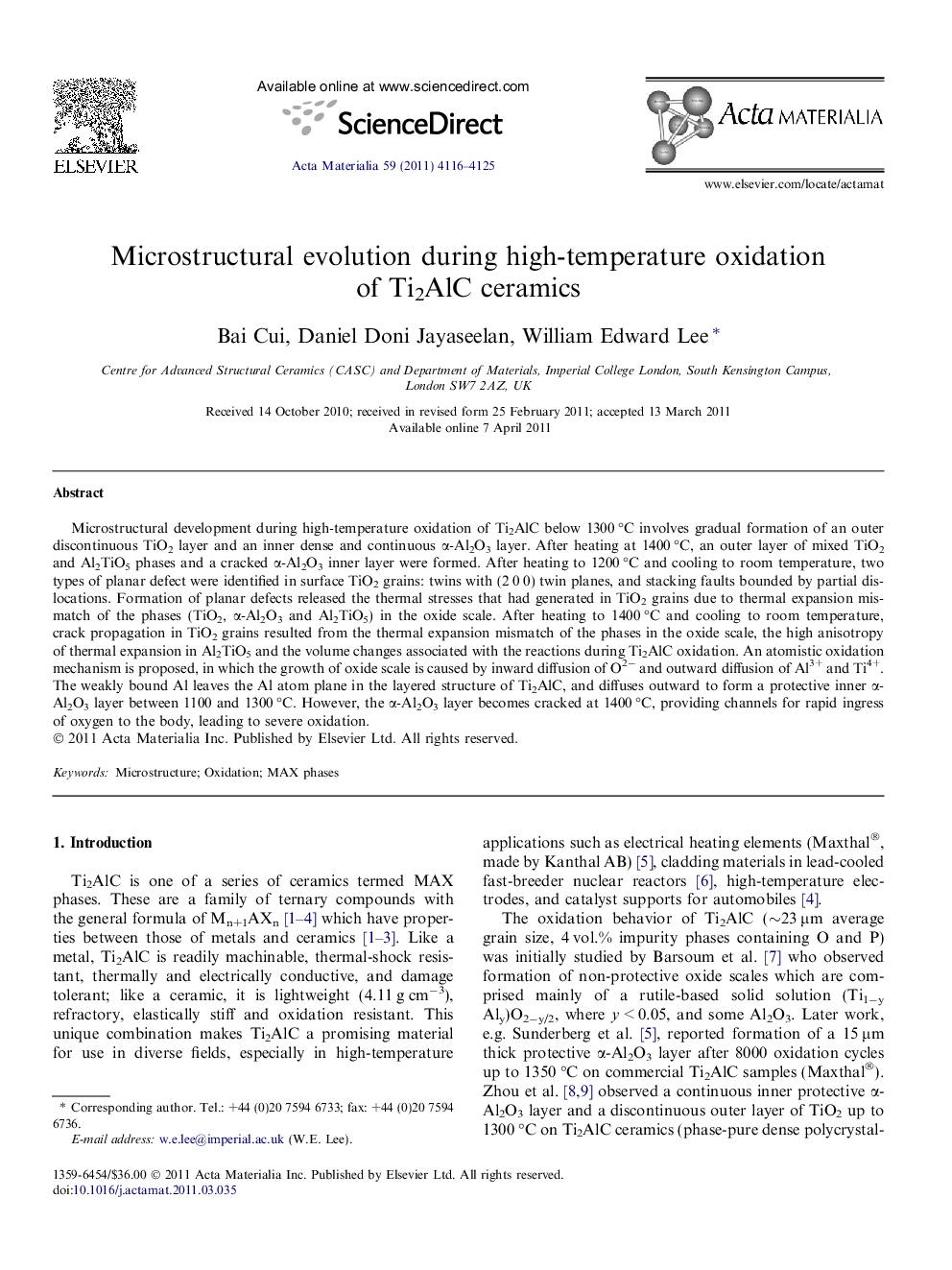| کد مقاله | کد نشریه | سال انتشار | مقاله انگلیسی | نسخه تمام متن |
|---|---|---|---|---|
| 1447436 | 988644 | 2011 | 10 صفحه PDF | دانلود رایگان |

Microstructural development during high-temperature oxidation of Ti2AlC below 1300 °C involves gradual formation of an outer discontinuous TiO2 layer and an inner dense and continuous α-Al2O3 layer. After heating at 1400 °C, an outer layer of mixed TiO2 and Al2TiO5 phases and a cracked α-Al2O3 inner layer were formed. After heating to 1200 °C and cooling to room temperature, two types of planar defect were identified in surface TiO2 grains: twins with (2 0 0) twin planes, and stacking faults bounded by partial dislocations. Formation of planar defects released the thermal stresses that had generated in TiO2 grains due to thermal expansion mismatch of the phases (TiO2, α-Al2O3 and Al2TiO5) in the oxide scale. After heating to 1400 °C and cooling to room temperature, crack propagation in TiO2 grains resulted from the thermal expansion mismatch of the phases in the oxide scale, the high anisotropy of thermal expansion in Al2TiO5 and the volume changes associated with the reactions during Ti2AlC oxidation. An atomistic oxidation mechanism is proposed, in which the growth of oxide scale is caused by inward diffusion of O2− and outward diffusion of Al3+ and Ti4+. The weakly bound Al leaves the Al atom plane in the layered structure of Ti2AlC, and diffuses outward to form a protective inner α-Al2O3 layer between 1100 and 1300 °C. However, the α-Al2O3 layer becomes cracked at 1400 °C, providing channels for rapid ingress of oxygen to the body, leading to severe oxidation.
Journal: Acta Materialia - Volume 59, Issue 10, June 2011, Pages 4116–4125